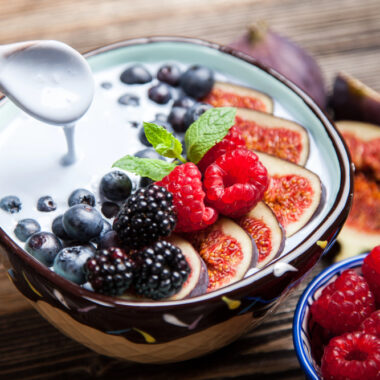Today we’re going to talk more about what we can learn from previous generations about cooking, nutritious eating, and how to make healthy meals for our families. In the past, we’ve talked about things like cooking from scratch, cooking at home with fresh ingredients, and using local foods and seasonal produce.
We’ve talked about eating all the parts, nose to tail, and about some traditional cooking methods like slow cooking, et cetera. We’ve talked about eating as a family, and how that connection is so good and so healthy. We’ve talked about being balanced, and not going along with all the trends or diets. We’ve talked about recipes that have been passed down from our grandparents, and their simpler, healthier way of life in general.
Today, I want to talk about some of the less obvious things that we can learn from previous generations about cooking and nutrition. This is not just what they ate, but how they thought about food, and how they made it healthier. We’ll talk about their habits; things that were second nature to them, and how they would be really helpful to us.
It’s been a while since I’ve done a ten point episode. Some of you like that. I don’t easily stick to points – I tend to have a brain that goes in all directions, but I thought for this one we’ll do ten points to hopefully make it easier to remember.
Point number one is that bitters were a regular part of their diet back then. Bitters are something we don’t easily eat. We do sometimes have them in tea like dandelion tea, and there are radishes that some people eat in salads, but it’s not really something we try to remember to do on purpose. I think bitters are a very good addition to our meals. Any kind of bitter leaf is a good thing because it helps with digestion, it helps to stimulate bile, and to support liver function. It also regulates your appetite.
So, think of things you can have like arugula, endive, or apple cider vinegar. You can have a little splash of that in some water before a meal or before bedtime. Those things are great for supporting digestion, helping with your blood sugar, and things like that. Bitters should be a part of our diet.
Point number two is bone marrow – cooking with bones, and even chewing the bones. People in the past knew that marrow and soft simmered bones, like in oxtail soup, were prized nutritional items. Bone marrow is rich in minerals, in collagen, and in the right kind of fats. It’s basically nutritional gold.
You can dry roast a marrow bone. You can put marrow bones in soups or stews. Scrape out the marrow, and just eat it in the stew. You can mix it into the soup, or spread it on toast with some salt and pepper. It’s a very nutrient dense snack. Also, cooking your meat on the bone is going to give you so much more nutrition than if you don’t. If you’re cooking a roast lamb or you’re cooking chicken, it’s so much better to get one on the bone, and then you get all those extra nutrients with your meal.

Point number three is scrap cooking – cooking with your scraps or your leftovers. This was a skill, not just something that was a trend, or something they did now and then. There were specific things they did to use up their leftovers or scraps from things like vegetable peels, leftover meat, and drippings. Perhaps they’d make bone broth after they made a roast. Things like stale bread and wilted greens were used very creatively in soups and stews. There was less waste, more flavor, and more nutrition that they got from their food.
So, what can we do? We can save vegetable scraps to use in making bone broth or vegetable soup. We can save bones from roasts. You can even freeze those in a container until you’re ready to use them when you’ve collected enough. You can use leftover carrots and things like that in your broth.
You can make stale bread like leftover sourdough into croutons, which are delicious. You can even use it in a cheese fondue – it tastes better with stale bread. You can make bread crumbs by putting the bread in the blender after you’ve toasted it. Wilted greens can go into soup, or they can be made into a pesto, which is delicious. So, be creative and think about what would be a good way to reuse things, to use up things you’d normally throw away.
My fourth point is that food as medicine was the norm. Back then, they didn’t use only herbs medicinally, but all kinds of things like garlic, ginger, onion, spices, herbs, and vinegar. They used these for flavor, but they also used them preventatively against illness and therapeutically if they were sick. Think of things like chicken soup, dandelion tea, and onions. These ingredients always help with digestion. They reduce inflammation, and they support immunity.
So, when you’re cooking, cook with intention. Add more turmeric, add some garlic to help your heart, or add some ginger to help with digestion. Serve your food with ginger tea or green tea. You can grow yarrow in your garden to help with injuries, or you can grow some comfrey, otherwise known as knitbone, to make poultices.
You can use plantain, which is a weed that often grows in the garden – that one with the veins in a long stripe on it – that can be used to make a tincture to help with stings. It’s good at sucking the toxins out of something or the poison, so there’s lots of plants that can be used medicinally.
Point five is that saturated fats were used. They were not demonized. They were used in moderation, not overused, but recognized for the nutritional value that they have. People used to cook with lard or tallow from animals without guilt. They used butter from freshly milked cows’ cream. These things were made from good, whole ingredients. They didn’t have a long list of ingredients like margarine, full of seed oils and awful things, but good animal fats. These things are stable for cooking. They contain the fat soluble vitamins A, D, E, and K. People back then hardly used processed oils or seed oils. They also used ghee and olive oil with intention.
Point number six – they were used to soaking, sprouting, and fermenting grains and legumes. Before pressure cookers were around, and before even canned beans, people used to soak their beans. They would ferment their bread dough. They would sprout their grains. These methods would reduce the antinutrients like phytic acid, and they would make the nutrients that we want more available. They would aid digestion.
These are good habits to have. If you’re going to cook oats, soak them overnight in the pot. Set up everything in the pot the night before, add a little apple cider vinegar, and then your oats are going to be much healthier. If you’re going to cook rice, then try to soak it for a couple of hours and then rinse it before cooking. If you’re baking bread, sourdough gives the dough time to ferment, especially overnight, and it breaks down some of the gluten.

So, any type of fermentation is best. You can do things like making kefir from your milk. Things like lacto fermented pickles or sauerkraut are great, not fermented with vinegar, but fermented on the counter naturally. These are all things our grandparents did, and are very healthy for us.
Maybe start with something that’s not overwhelming and see what you can use. Often you can buy readymade things like sauerkraut and lacto fermented pickles. I buy those things, and we sometimes make sourdough, but I haven’t made kefir. My friends have made it, but I’m still not quite there yet. We love to buy lacto fermented pickles and things like olives, and we’ll buy kefir. It’s a blessing that we can find these things in a grocery store these days.
Any of these sour things are very good for us in the same way as the bitters are. They help with digestion, they help with gut health, immunity, and all those things.
Salt was also used to preserve things like pickles, meats, and fish before refrigeration. Those would be naturally fermented using salt, which creates probiotics, and it preserves nutrients. You can preserve these things in the same way as you’d make a jar of pickles. You’d add brine, which has salt, and then you’d add water and maybe some other things like garlic, and leave that to ferment. They had things like salt preserved lemons, kimchi, and cured meats.
Point number seven – wild and foraged foods were commonly used. People gathered wild greens for medicinal use, and especially berries. Maybe you’ve made an elderberry syrup for helping with your children’s health immunity when they have a cold. They’d use things like wild mushrooms like truffles, as well as seasonal herbs like rosemary, oregano, and thyme.
If you pick something and use it straight away, it’s going to be more nutrient dense than if it’s packaged from the grocery store. Obviously, you need to know what you’re looking for and what you’re picking, and not poison yourself with mushrooms. You could even start at a farmer’s market. The food there is going to be fresher, and it’s going to be wild grown, not sprayed with pesticides. Hopefully it’ll be pesticide free from a farmer’s market.
Whatever you can do in your garden is fabulous. You could have a kitchen herb garden with some of your favorites that are right at your fingertips when you’re cooking. This adds amazing flavor and great nutrients to your food. You can grow things like basil, thyme, rosemary, oregano, or whatever herbs you enjoy. It’s not as easy these days to have access to things like mushrooms and truffles in the wild, but use whatever you can find.
Point number eight – desserts were often fruit based. It was similar to the way the French do it – they used minimal sweetener in their desserts. Treats were things like baked apples, stewed rhubarb, berry pie, or berry compotes. They were sometimes sweetened with honey or dried fruit, or with nothing at all. Sugar consumption was a lot lower, and natural flavors were encouraged.
Try stewing apples or pears with spices, or blending up some bananas with cocoa powder and freezing that for a whole food dessert. See if you can get your creative juices flowing. You can take some berries in a pan and stir them until they have a jam-like texture. Let the water evaporate a little bit, and then have that over pancakes. Think about what natural, whole ingredients you can use, like fresh fruit with whipped cream on top – berries and cream or peaches and cream. Those things are all delicious.
Point number nine is about what some people call a porridge culture. This existed in many cultures and countries where grains like oats, cornmeal, millet. rice, and buckwheat were used to make a slow cooked porridge. Sometimes it was savory, and sometimes it was sweet. They had things like polenta, which is similar to cornmeal, and it would set, and they could cut it into squares that they could have with lunch, with a soup or stew. There was sweet porridge to have for breakfast.
Porridges were cooked slowly after being soaked, so they were easier to digest and more filling. This was a cheap, healthy, and filling breakfast. They’d have savory oats with some toppings like fruit – banana, strawberries – and maybe some raw milk in there. They’d have millet porridge with cinnamon and nuts, and then there were things like rice pudding and bread pudding. All of those things were enjoyable because they used starches in the correct way, preparing them well for easy digestion. They were also using up leftovers, and making a nutritious, delicious breakfast, dessert, or side for lunch.
Then lastly, point number 10 is that animal fats were collected and reused. They didn’t just use lard and tallow, et cetera, but they would keep them and reuse them. Drippings from when bacon was cooked, or from chicken, were used to make bone broth, and then used in a stew. The drippings could also be used to cook vegetables in. They’d use anything that they could for flavor and as a fat to cook in. If something was stable at a high heat, then they’d save it.
Saving bacon grease to cook your meat in, or to roast your vegetables in, adds to the flavor. You can cook eggs in bacon fat to give them a delicious flavor and add nutrients. I love using coconut oil, but of course you didn’t get that long ago. It can be toxic to reheat seed oils, but animal fats are pretty stable, and things like tallow can be reused. You take the tallow and cook your vegetables in it, and then you drain it again. Then it’s got the extra flavor of your seasonings and vegetables, and the second time you use it, it’s going to bring even more flavor to your food. You can judge when it seems like it’s been overused, and when it’s okay to still use it again. It obviously saves money to do that as well.
These are just 10 tips about things that they may have done many generations ago, things we can learn from. I hope there’s something that inspired you.





